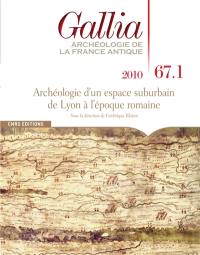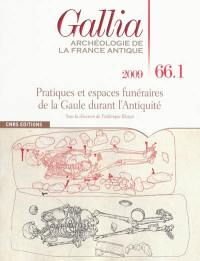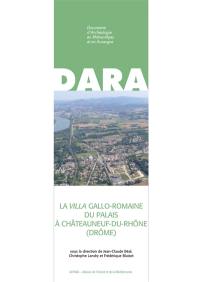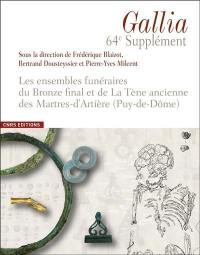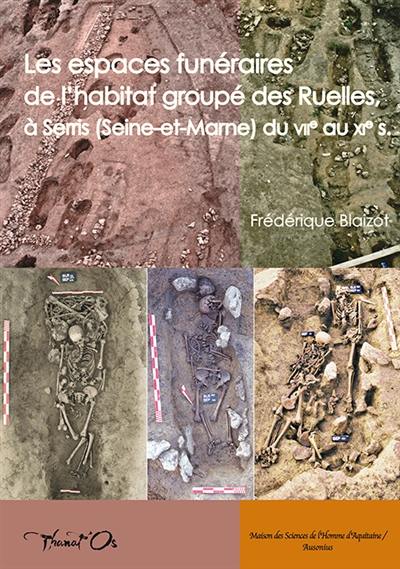
Fiche technique
Format : Broché
Nb de pages : 573 pages
Poids : 2520 g
Dimensions : 22cm X 30cm
ISBN : 978-2-35613-207-9
EAN : 9782356132079
Les espaces funéraires de l'habitat groupé des Ruelles, à Serris (Seine-et-Marne) du VIIe au XIe s
modes d'inhumation, organisation, gestion et dynamique
Quatrième de couverture
Thanat'Os
Issue du laboratoire d'anthropologie de Bordeaux, Frédérique Blaizot est archéo-anthropologue à l'Inrap, chercheur associée au CNRS (PACEA). Elle assure la direction d'opérations funéraires principalement en Auvergne-Rhône-Alpes, et est l'auteur de nombreux articles et d'ouvrages portant sur les contextes funéraires et l'archéoanthropologie.
Le site des Ruelles, à Serris (Seine-et-Marne), émerge dans le cadre d'une création d'habitats au VIIe s. Il débute avec l'implantation d'une ferme domaniale et s'achève au début du XIe s. après une résurgence du pôle de pouvoir au Xe s. L'opération archéologique menée sur 16 hectares, s'inscrit dans un terroir largement exploré par l'archéologie ; elle révèle un habitat groupé bipolaire et un grand ensemble funéraire qui s'est développé autour de deux édifices religieux dont l'un est abandonné à la fin du VIIIe s. Avec les petits ensembles funéraires dispersés dans l'habitat, les Ruelles comptent un peu plus d'un millier de sépultures.
Ce travail a pour objectif de classer et d'étudier les phénomènes taphonomiques du squelette afin d'identifier les architectures funéraires et de comprendre leur évolution (analyse typochronologique). Concernant cet aspect, la synthèse s'accompagne du catalogue analytique exhaustif des sépultures. Un second volet concerne l'analyse des pratiques funéraires, de manière à mettre en évidence les formes d'organisation sociale qu'elles transcrivent ; cette partie aborde l'analyse du recrutement (sexe et âge au décès) par phases chronologiques, la répartition spatiale des sépultures en fonction des choix architecturaux et du sexe et de l'âge au décès, les formes de regroupements et la gestion matérielle de l'espace, les continuités et les discontinuités spatiales, ainsi que les rapports entretenus par les différentes zones d'inhumation. Sont enfin discutés la genèse des pôles funéraires, les modalités de leur développement, le rôle des deux édifices religieux, le statut des différents groupes dégagés par l'étude des pratiques funéraires, la relation entre les lieux d'habitat et les espaces sépulcraux, et aussi les modalités de gestion et d'organisation des morts dans ce territoire en prenant en compte les sites fouillés aux alentours. Ces conclusions s'inscrivent dans les questionnements relatifs à l'organisation et à l'évolution des sociétés rurales du haut Moyen Âge.
The site of Les Ruelles, at Serris (Seine-et-Marne, France), emerges within the framework of a creation of settlements in the 7th century. It begins with the establishment of a domanial farm and is abandoned at the beginning of the 11th century after the revival of the pole of power in the 10th century. The archaeological excavation covering 16 hectares, fit in a territory largely explored by archaeology ; it reveals a bipolar agglomerated settlement and a major funerary unit which developed around two religious buildings of which one is destroyed at the end of the 8th century. By taking into account the small funerary units dispersed in the different parts of the « pre-village », Les Ruelles adds up to a little more than one thousand burials.
This work aims to classify and study the taphonomic phenomena of the skeleton in order to identify funerary architectures and to understand their evolution (typochronological analyses). Concerning this aspect, the synthesis is accompanied by the exhaustive analytical catalogue of the burials. A second orientation relates to the analysis of the funerary practices, to highlight the shapes of social organization that they are supposed to transcribe. This part approaches the analysis of sex and age repartition by chronological phases, the spatial distribution of the burials according to the architectural choices and to the sex and the age at death, the forms of regroups and the material management of the funeral settlement, the spatial continuities and discontinuities, as well as the relations maintained by the various burial units between them. Are finally discussed the genesis of the funerary poles, the way in which they develop, the role of the two religious buildings, the status of the various groups revealed by the study of the funerary practices, the relationship between domestic and sepulchral places, and also the patterns of management and organization in this territory by taking in account other sites around Les Ruelles. The conclusions fit in to the general questioning relating to the organization and the evolution of the rural societies of the Early middle ages





